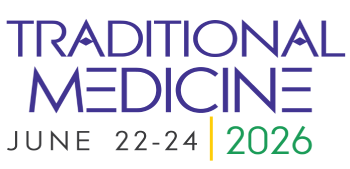Title : American physician and patient worries about traditional medicine
Abstract:
After two decades of studying Americans’ use of herbal and traditional medical therapies, much has changed, but the core reasons for choosing these “alternative” remedies remain the same. The original study’s purpose was to understand the current knowledge, beliefs, and use of herbal medicine in the central United States in the late 1990s and early 2000s. The data showed that Western herbal medicine was a "modern herbal synthesis" shaped from three source traditions-- classic Western herbalism, Traditional Chinese Medicine, and Native American herbal medicine, and that it was best understood as a part of cultural evolution known as a revitalization movement. In short—when a society’s cultural systems (such as medical care) do not meet the needs of a significant portion of people, they seek alternative paradigms that do offer them what they need. Two decades later, this trend continues, but there have been changes. One of the most important changes is the increase in interest in other forms of Traditional Medicine and Ethnomedicine from places such as Korea, India, Japan, and more. With these new social influences, the types of remedies and the ways they are consumed and purchased have changed as Americans adopt not just remedies but the philosophies and methodologies of other ethnomedicines. Traditional medicine, ethnomedicine, and natural therapies have solidified their place in modern global society and in the United States, in particular, because they meet needs unfulfilled by Western allopathic medicine. Theme and qualitative analysis of modern information sources and popular ethnomedical therapies show that the same core reasons people choose these therapies remains the same. People are more likely to use herbal remedies for illnesses not satisfactorily treated by Western allopathic medicine. These failings could be comfort during treatment, balancing spiritual, cultural, or ethical beliefs during therapy, ideas of acceptable side effects, personal control, or a desire for sustainable solutions. While much of this increases positive use of traditional medicines, we have also seen a rise of dangerous or poorly researched “remedies” that are not really associated with ethnomedicine or natural therapies such as macro-dosing of vitamins and using animal wormers in the face of recent epidemics. Unfortunately, these dangerous practices tarnish the reputation of legitimate traditional and ethno-medicine and make their acceptance by physicians more difficult.




